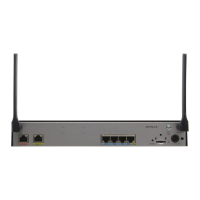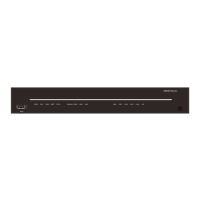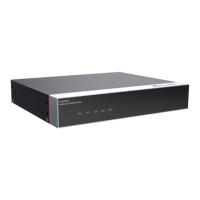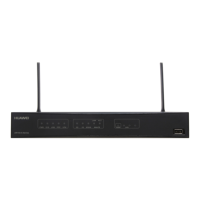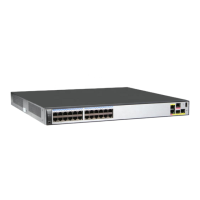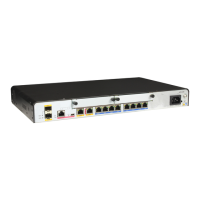As shown in Figure 7-1, RSTP defines four port roles: root port, designated port, alternate
port, and backup port.
The functions of the root port and designated port are the same as those defined in STP.
The functions of the alternate port and backup port are as follows:
– From the perspective of configuration BPDU transmission:
– The alternate port is blocked after learning the configuration BPDUs sent by other
bridges.
– The backup port is blocked after learning the configuration BPDUs sent by itself.
– From the perspective of user traffic:
– The alternate port backs up the root port and provides an alternate path from the
designated bridge to the root bridge.
– The backup port backs up the designated port and provides an alternate path from
the root node to the leaf node.
After all ports are assigned roles, topology convergence is completed.
l STP port state
Table 7-1 shows the port status of an STP-capable port.
Table 7-1 STP port state
Port state
Purpose Description
Forwarding A port in the Forwarding state forwards
user traffic and BPDUs.
Only the root port and
designated port can enter the
Forwarding state.
Learning When a port is in the Learning state, a
device creates a MAC address table
based on the received user traffic but does
not forward the traffic.
This is a transition state,
which is designed to prevent
temporary loops.
Listening A port in the Listening state is
participating in election of the root
bridge, root port, or designated port.
This is a transition state.
Blocking A port in the Blocking state receives and
forwards only BPDUs but does not
forward user traffic.
This is the final state of a
blocked port.
Disabled A port in the Disabled state forwards
neither BPDUs nor user traffic.
The port is Down.
l RSTP port state
Table 7-2 shows the port status of an RSTP-capable port.
Table 7-2 RSTP port state
Port state
Description
Forwarding A port in the Forwarding state can send and receive BPDUs as
well as forward user traffic.
Huawei AR3200 Series Enterprise Routers
Configuration Guide - LAN 7 STP/RSTP Configuration
Issue 02 (2012-03-30) Huawei Proprietary and Confidential
Copyright © Huawei Technologies Co., Ltd.
184

